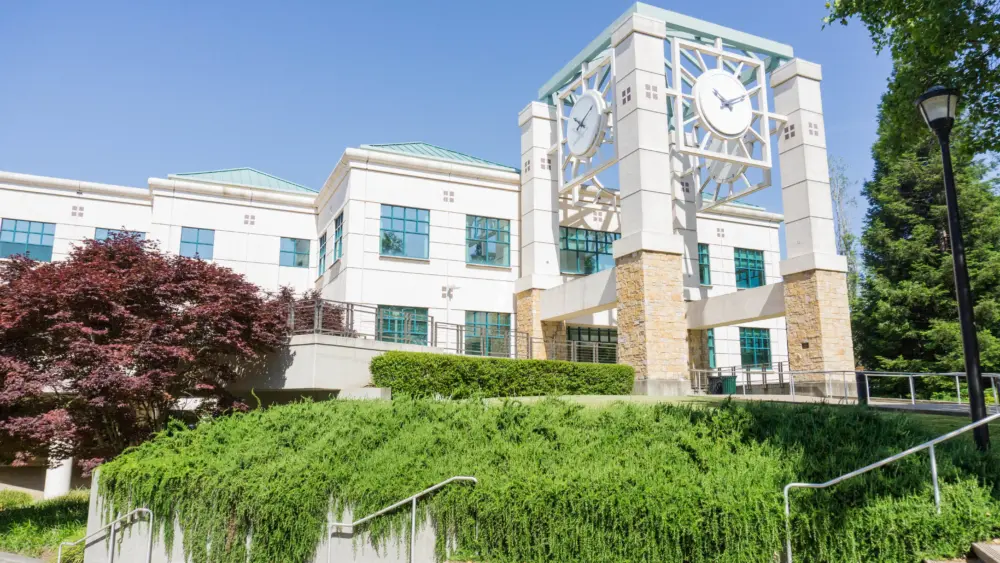What’s needed to bring locals and visitors to downtown Novato? Depends on who you ask…
Downtown Novato, also known as Old Town, is broken. It must be broken, because everybody wants to fix it, has tried to fix it or is planning on fixing it real soon.
The building of the Millworks, the $80 million mixed-use project that includes a new Whole Foods market and 124 condos and townhomes is only the most recent example of a cure.
A report commissioned by Novato’s redevelopment agency in 2008 concluded that downtown could benefit from anchor stores willing to stay open at night, fewer vacancies and more out-of-town shoppers.
Then there’s the Wayfinding signs project. The signs will not only tell visitors and Novato natives where things are, they’ll also capture the identity and personality of Novato, further strengthening the semi-dormant brand of Marin County’s northernmost city.
There’s also a worthy effort underway to open the downtown theater, restore the building and bring a bit of energy to Old Town after dark. And as if all that weren’t enough, lively minds can debate the up and down sides of having City Hall downtown as opposed to out by Vintage Oaks mall.
This is to say nothing of the latest batch of businesses and stores opening downtown. Of course, it’s hard to chat about them without talking about the businesses that closed up to make way for them.
As you can see, there are many schools of thought as to how to make Novato’s downtown busier, better, more energized, a retail location, a dining destination, a place for locals and visitors to gather—or all of those things combined.
Exactly what’s wrong with downtown Novato is fuzzy, neither black nor white, but rather that vexing shade of gray that seems to confound even the best and brightest and only serves to pose more questions than answers. It’s the stuff that makes for lively discussions in coffee shops and on bar stools.
The conclusion that something is wrong with downtown may be wrong on its face. But it’s easier to accept as fact, since there seems to be no shortage of theories on how to fix what’s broken.
Harvesting Vintage Oaks
To better understand all the issues facing downtown Novato, a quick history lesson is in order. In the late 1980s, Novato founded its redevelopment agency for the purpose of putting a regional mall together that would not only provide residents a convenient place to purchase goods and services locally but also (at least in theory) provide local businesses a new location to serve those residents. Not incidentally, another happy result from the construction of a new retail center would be significant sales tax revenues flowing to city coffers.
The city worked with the James Campbell Trust, an entity out of Hawaii, to build a regional mall. The redevelopment agency provided opportunities via tax advantages as well as access to land and financial structures that were beneficial to retail development. The result was Vintage Oaks, a 60-acre regional shopping center that includes the only Marin location of Costco, as well as a Target, Ross and Marshall’s. In retailer speak, the mall is a “power center,” meaning its anchor stores are big box and the identity of the center with consumers is tied to the idea of large stores and deep discounts.
Today, the result is a mall that enjoys 100 percent occupancy (as of Jan. 1, 2011), an unheard of feat in a time when unemployment in the Golden State still tops double figures.
One drawback to the success Vintage Oaks has enjoyed is that it’s become the dominant shopping location in Novato. While retailers and eateries at Vintage Oaks would argue that its success is a reason to celebrate, the vast majority of retailers in the mall are national chains, a far cry from the locally owned stores found downtown. While it benefits Novato as a whole that Old Navy, Macy’s and Pier One hang a shingle at Vintage Oaks, the name draw of those national brands does nothing to bring shoppers downtown.
Is it really broken?
The riddle of how to fix downtown Novato begins with the slippery assumption that it isn’t what it needs to be. Defining a downtown, never mind a successful one, is tricky business. To begin with, the word “downtown” conjures up images of childhood and, inevitably, an idealized time and place when life was easier and times were better.
With Novato, the danger of wishing for something from the past is even easier, since Novato either enjoys (or is handicapped by) its “country cousin” reputation in Marin, depending on your take. A politically incorrect phrase repeated by non-Novato residents in hushed tones is that Novato “isn’t really Marin.”
It’s hard to say how this plays into the expectation level of residents and merchants when it comes to downtown. The city of Novato is aware that Vintage Oaks has certainly held the retail focus in town for years, which is why the city has spent about $12 million over the years making parking improvements and landscaping changes to polish the image of downtown.
And the city, the Novato Chamber of Commerce and the Downtown Novato Business Association (DNBA) are now teaming up on a collective effort to market Novato as a shopping destination. The timeline for the effort is still in development as the trio gather proposals for the program.
Cure #1: The Millworks
The most ambitious project in years is the Millworks, a combination of 124 townhomes and condos constructed by Signature Properties, along with a Whole Foods market. The project got its start at the grass roots level when the Novato Mother’s Club asked the city to recruit Texas-based Whole Foods to open a location there. Signature, the Pleasanton, Calif.-based homebuilder had the bad luck to build its project as the credit markets crashed and home prices plunged. The company eventually shifted its strategy away from selling into a market where nobody was buying into renting the unsold units. Today, the project is fully occupied and Whole Foods is selling plenty of organic groceries.
But store owners and merchants have, for the most part, found that the addition of the store and the residents above it haven’t really improved business down-town much. “Whole Foods is a great addition to downtown,” says Don Cliver, who manages the Grant Avenue branch of Sonoma Bank and is president of the DNBA. “I know there were some people who thought Whole Foods was going to be the savior, but it was never supposed to be. There have been a few stores that have noticed an increase in foot traffic and a difference in sales, but with the economy being down, it’s hard to say what the impact has been.”
“I supported that project completely and still do,” says Kim Kaselionis, CEO of Circle Bank in Novato. “High-density projects in certain locations work. But the timing of the project was very unfortunate.”
Morris & Company, a gift store located just off the back parking entrance to the market, has seen business pick up since Whole Foods opened. But other merchants on Grant Avenue have said the new store has had no effect at all.
Is it a sign?
Maybe the reason downtown isn’t bustling is that not enough people know where it is or where to park. This is the idea behind the “Wayfinding” program, a $50,000 effort at designing signs that would direct visitors to the downtown area. The city has hired Merje, a Pennsylvania company, to design signs that will point folks to various parts of Novato, beginning with the downtown shopping area.
The signs are also supposed to capture the unique character of Novato at a glance. “What we hope the signs will do is show people once they get off 101, they have arrived in downtown Novato, and that it’s a pretty special place to shop and dine,” says Sandy Stohler, a senior management analyst with the city of Novato, who’s project manager. Stohler says the Wayfinding project goals are to support and promote a distinct identity for downtown Novato; to enhance locals’ and visitors’ ability to easily navigate downtown and find desired destinations (including parking) and to continue to revitalize downtown by investing with redevelopment funds in infrastructure to promote economic growth.
The city originally put out a request for companies to bid on the project, and 14 responded. Of that group, four were chosen to interview and Merje was chosen for the project. The company has done similar work in Santa Cruz and San Diego.
Stohler mentioned that Healdsburg and Petaluma have both found that improved signage helped bring more people downtown. As for the goofy “Wayfinding” term, Stohler explains, “It’s a term used to help people find their way to desired destinations, and Merje is well-known for developing wayfinding programs for communities.”
Though the Wayfinding concept is endorsed by the community, the initial trio of designs, presented at a December 2010 public meeting, wasn’t well received by residents, and Merje was going back to the drawing board to come up with a new design to be presented in spring 2011. The project can be done in stages, and the city is going to look for partnerships to help fund the manufacturing and installation of the signs (the budget for the fabrication and installation of the signs will be determined once the preferred design option is selected). No word on whether the sponsors will have a chance to drop the “Wayfinding” handle or perhaps come up with something that will make even less sense.
Reopening the Novato Theater…again
The Novato Theater, built in 1947, has been shuttered since 1991, despite numerous efforts to reopen it. The nonprofit Novato Theater Restoration Committee purchased the property in 1996 with plans to rehabilitate it and open it as a performance center. But eight years of efforts came up short and the theater was handed over to the city, which assumed the debt to the original theater owners, the Bowman family.
Now, Bernice Baeza has purchased the property from the city for $50,000 on the condition that she raise an additional $750,000 by June. Baeza, who successfully rehabilitated the Lark Theater in Larkspur, must also secure a bank loan of $1 million as a condition of the sale.
Can you fight City Hall on location?
A debate has ebbed and flowed since the city started renting space for City Hall on Rowland Way. And, once again, the city is looking at bringing it back downtown. From a pure convenience standpoint, where City Hall is located doesn’t matter to most residents, since it isn’t someplace they frequent. But from the standpoint of locating a large business downtown where its employees might be customers, it does matter.
City Hall has been a hot button in Novato for years. In 1987, the city council approved a plan to build a pair of office buildings downtown on city-owned land. But a voter-approved initiative scuttled the plan after a new City Council majority was elected. Meanwhile, the old buildings owned by the city have aged and become earthquake-unsafe, so the city rents space on Rowland at $700,000 a year.
The City Council meets in a refurbished old church it owns downtown, and there’s talk the city wants to take another swing at a new City Hall located in Old Town.
The new players
Critics of downtown Novato point to the stores that have gone out of business in the last year as proof that Old Town just doesn’t have it. New Shoes for Kids has closed up shop. A woman’s boutique, Betty Ann, called it a day. Children’s clothing store Sweet Potatoes tossed in the towel as well. Old Town Art Works is gone, as is the restaurant Portelli Rossi.
But their closing can’t be traced to whether downtown is ailing or not, given the condition of the economy. And there are more than a few merchants that have made the decision to come to Old Town. Batika India Bistro is serving Indian cuisine in the old Portelli Rossi location. Duarteau Boutique has abandoned its San Rafael location for the old New Shoes for Kids storefront. Georgiou, a national chain of women’s clothing stores, elected to open a Grant Avenue location. And Rustic Bakery has opened a new location at 1407 Grant Avenue, despite the fact that Creekside Bakery is at 1719 Grant and flourChylde is at 850 Grant.
The new bakery brings up perhaps a legitimate concern about downtown. The mix of businesses in Old Town is certainly eclectic, but is it enough to draw shoppers? “The general plan never focused on types of businesses downtown, the mix is odd—there really isn’t much flow,” says Cliver. “The city and DNBA are working with building owners trying to get them to really think about what’s a good fit when a space comes open, instead of simply signing a lease with the first business willing to do so.”
Reworking a mall mix of retailers and eateries is fairly simple. Come up with a game plan and either wait out leases or write checks to make stores go away, and then repopulate with the mix you want. But doing the same thing in a downtown is much more difficult as each building and space makes its own decisions no matter what the DNBA, Chamber or City Hall might think of it.
One new business that has a chance to lead the change downtown is Trek Winery, which hopes to open a downtown tasting room by summer. The business has two different locations in mind where it could open a tasting room as well as production facilities. The city has talked to Trek and its owners, Andy and Liz Podshadley, about buying a building from the city, and Trek is talking to a bank about buying a Victorian home on Machin Avenue.
“The residents of Novato have been very supportive of our ‘urban winery’ idea,” says Andy, a Novato native. “The Novato City Council, as well as city staff, have also been very helpful and supportive. I’m confident Trek Wine will open its doors in 2011.”
Podshadley has plans to hold community events and wine education classes in the new digs. “We’re at the gateway to Wine Country, and we’ll provide visitors and Novato residents a chance to taste fine wine without getting on Highway 37 or 101.”
Circle Bank will soon build its new headquarters at 999 Grant, at the corner of Grant and Redwood. Demolition of the existing building is set for March (weather permitting), according to Kaselionis. “It will be a great building when we’re done, and banks tend to help foot traffic, so we’ll be part of making downtown busier.”
Cliver may have said it best: “Right now, we’re a hit-and-run destination. We have to give people a reason to stick around and we need to take ownership of that.”
Author
-

Bill Meagher is a contributing editor at NorthBay biz magazine. He is also a senior editor for The Deal, a Manhattan-based digital financial news outlet where he covers alternative investment, micro and smallcap equity finance, and the intersection of cannabis and institutional investment. He also does investigative reporting. He can be reached with news tips and legal threats at bmeagher@northbaybiz.com.
View all posts



